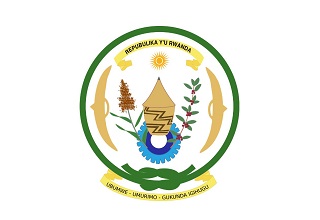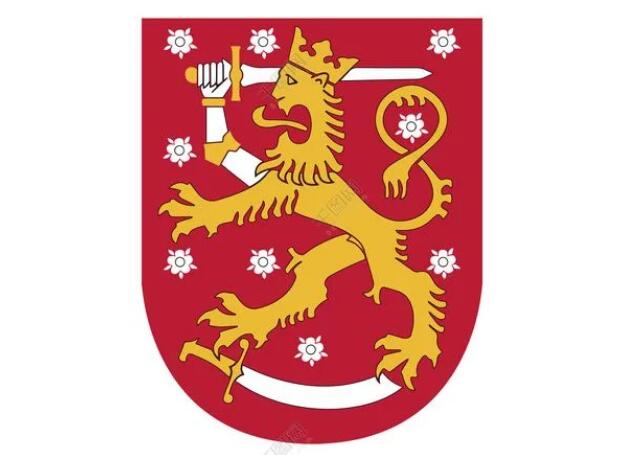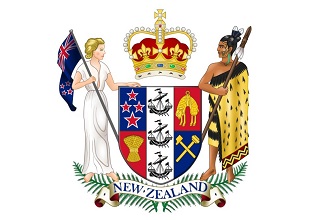Announcement on imported Zambia Fresh Blueberry Plant Quarantine Requirements
1. Inspection and quarantine basis
(1) "The Law of the People's Republic of China";
(2) The "Law of the People's Republic of China in and out of the country" and the implementation regulations;
(3) "Food Safety Law of the People's Republic of China" and implementation regulations;
(4) "Measures for the Supervision and Supervision and Supervision and Quarantine of Entry Fruits";
(5) "The General Administration of Customs of the People's Republic of China and the Ministry of Agriculture of the Republic of Zambia on the Protocol on the Quarantine of Zambia Fresh Blueberry Plant Quarantine".
2. Allow the name of entering the country
Fresh blueberry (hereinafter referred to as "blueberry"), scientific name Vaccinium L., English name Blueberry.
Third, the place where allowed
Zambia Chisamba area.
4. Approved orchards, packaging plants, refrigerated libraries and processing facilities
The transition orchard, packaging factory, refrigerator and processing facilities shall be reviewed and recorded at the Botanical Agency Bureau (hereinafter referred to as the "Zanfang") of the Agricultural Ministry of Agriculture in Zambia, and will be approved by the General Administration of Customs of the People's Republic of China (hereinafter referred to as "China"). register. The registration information must include the name, address and registration number so that the exported goods are accurately traced accurately when not in compliance with relevant regulations. Before the annual export season, Zan must provide a list of registration to the Chinese side. After the Chinese side is approved and approved, China will announce it on the website of the General Administration of Customs.
5. The list of quarantine and harmful biological lists that China pays attention to
1. Mediterranean CERATITIS CAPITATA
2. CERATITIS ROSA
3. Africa Ceratitis Cosyra
4. Cocatitis Punctata
5. Figs Ceroplases Rusci
6. Pseudococcus longispinus
7. Black silk shield 蚧 Ischnaspis longirostris
6. Inspection and quarantine before export
(1) Orchard management.
1. The orchard should establish and implement a good agricultural operation specification (GAP) under the supervision of Zanfang to ensure the traceability of the production process. Maintain orchard hygiene conditions, eliminate rotten fruits during harvesting, and implement comprehensive prevention and control of harmful biological comprehensive biology, including prevention and control measures such as pests and insect pest monitoring, chemistry or biological prevention, and agricultural operations. Each orchard must choose one of the following measures: to clear the fruit, collect the fruit in the box or spray the bacteric agent on the fruit when it is harvested.
2. The Zan party should monitor the harmful organisms of the Chinese concern. The plant quarantine measures for export orchards must be implemented under the guidance of technical personnel with harmful biological prevention and control and monitoring. Technicians should receive training by Zan or Zanfang authorized training institutions.
3. All registered orchards must retain the monitoring and control records of harmful creatures, and should be provided to the Chinese side. The prevention and control records must include information such as the name of all chemicals, effective ingredients, dates and concentrations of use in the growth season.
4. For the Mediterranean solid flies, Natal solid flies, African mango flies, and cocoa solid flies, Zanfang should establish a real fly monitoring system, setting density of the capture device: 2 Jackson catcher every 50 hectares, every 50 hectares settings 1 MCPHAIL capture device, with less than 50 hectares of orchard two types of catcher each. The Jackson traps take Trimelure as a seductive agent, and the MCPHAIL capture device uses hydrolyzed protein as a seductive agent. Check the capture device every 7 days. If any real fly density (the average number of seductive capture per day of each capture per day) is greater than 0.7, comprehensive management measures including chemical or biological control should be taken.
5. For flowerless fruits waxy, long -tailed powder, and black silk shields, the orchard monitoring from the flowering period to the harvest period, monitor once a week, especially observe whether the branches, stems, leaves and fruits have adults.
(2) Packaging plant management.
1. The processing, packaging, storage, and transportation process of loses in China must be carried out under the quarantine supervision of the praise or its authorized officials.
2. During the packaging process, the losses of Chinese blueberries should be eliminated, picked, and classified to ensure that there are no insects, mites, rotten fruits and branches, leaves, roots and soils.
3. If the packaged losses of Chinese blueberries need to be stored, they should be immediately entered and stored separately to avoid being infected by harmful creatures.
(3) Packaging requirements.
1. The packaging material for transfers should be clean and unused, which meets the requirements of Chinese -related plant quarantine. Cover the entire tray with a tray bag with mesh eyes (1.6 mm, interval 100 mm).
2. Each packaging box must be marked with information such as the name of the fruit name, the place of origin (district, city or county), the country, orchard name or its registration number, the name of the packaging factory or its registration number.
3. Each packaging box and a tray must be marked with Chinese or English "to the People's Republic of China" or "Exported to the People’ s Republic of China ".
4. If the wooden packaging is used, it must meet the requirements of the international plant quarantine measures No. 15 (ISPM 15).
5. Containers should conduct inspections before loading Chinese blueberries to ensure that the container has good hygiene conditions. Save the relevant records for inspection.
(4) Cold treatment requirements.
Lanhua blueberries need to take cold treatment. Under the supervision of Zanfang or authorized officials, according to the cold treatment operation procedure before the export (see Annex 1), the loser blueberry is cooled, or the cold treatment operation procedure (see Annex 2) is used according to the export transportation. The loser of the container is cooled. The requirements of cold treatment indicators are as follows:
Temperature requirements
Continuous number of days
1.11 ° C or below
15
1.67 ° C or below
17
2.22 ° C or below
twenty one
(5) Inspection and quarantine before export.
1. The praise should be sampled for each batch of losses of Chinese blueberries at a ratio of 1%.
2. If it is found that the quarantine and harmful biological live body is found, the entire batch of goods shall not be exported to China. The praise should find out the reason and take improvement measures. At the same time, saving the seizure record should be provided to the Chinese side.
(6) Plant quarantine certificate requirements.
1. The passing of Chinese blueberries, which is qualified, should issue a plant quarantine certificate, indicate the names or code of the orchard and packaging factory, and fill in the following additional statements in English: "This consignment of blueberries company with repirements space in the propocol o F Phytosanitary Requirements for Export of Zambian Fresh Blueberries to China, and is free from any quarantine peests of Concern to China. "
2. For the launch of the Chinese blueberry that implemented pre -export quarantine treatment, the processing temperature, duration and processing facility name or number of treatment facilities are required on the plant quarantine certificate. For cold treatment during transportation, the "Cold Treatment in Transit" should be marked on the plant quarantine certificate, and the temperature, duration, container number, and sealing number are marked.
3. The Zan party should provide the Chinese side quarantine certificate sample to the Chinese side before the operation, so that the Chinese side can check it.
7. Entry inspection and quarantine and unqualified treatment
When the Blueberry in China arrived at the port of China, the Chinese Customs implemented inspection and quarantine in accordance with the following requirements.
(1) Certificate and logo verification.
1. Check whether the imported blueberries obtain the "Entry Animal and Plant Quarantine License".
2. Check whether the plant quarantine certificate meets the provisions of Article 6 (6) of this announcement.
3. Check whether the identification on the packaging box and the tray meets the provisions of Article 6 (3) of this announcement.
(2) Entry inspection and quarantine.
1. Langhua blueberries should enter the port of imported fruits from the Chinese side.
2. According to relevant laws, administrative regulations, rules, etc., the inspection and quarantine of the transmission of blueberries is permitted to enter the country.
(3) Unqualified processing.
1. If it is found that the unruly orchard and packaging factories are found, the batch of goods will not be allowed to enter the country.
2. If the cold treatment is found invalid, the batch of goods will be taken to the shore -cold treatment (if it is confirmed to be a refrigerated container, which can still be carried out in the container), return, and destroy measures.
3. If it is found that the Mediterranean Fly, Natal Real Fly, African Mango Fly, or Cocoa Fly lived, the batch of goods will be returned, destroyed or removed. At the same time, China will immediately report to Zanfang, asking for suspension of the relevant orchard exporting blueberries to China until the entire project is suspended as depending on the situation. The Zan party should conduct investigations to find out the reason and implement corresponding improvement measures. China will decide whether to cancel the suspension measures based on the results of the rectification of the praise.
4. If other quarantine -harmful creatures are found by China, they are found or found that the quarantine -harmful creatures have not been reported in Zambia, the batch of goods will be returned, destroyed or removed. The Zan party should conduct investigations to find out the reason and implement corresponding improvement measures.
This announcement is implemented from the date of issuance. The General Administration of Customs was abolished at the same time.
Special announcement.
GACC
September 19, 2023
Cold treatment operation procedures before export
1. Cold treatment facilities
1. Cold treatment can only be carried out in the cold treatment facilities approved byZambia and China;
2.Zambia officials are responsible for ensuring that the cold treatment facilities used by exporters meet the appropriate standards and have refrigeration equipment that can achieve and maintain the required temperature;
3.Zambia officials will retain the records of facilities approved for transmission and fruit transportation. The record includes the documents that meet the requirements below:
(1) The location and construction plan of all facilities, including the detailed contact information of everyone/manager;
(2) The size and capacity of the facility;
(3) The type of heat insulation on the wall, ceiling and floor;
(4) The trademark, style, type, and capacity of the refrigeration compressor and evaporator/air ventilation system;
(5) The temperature range of the device, the defrost circulation control and the specifications and detailed information of any integrated temperature recorded equipment, etc.;
4. Before the export season of each fruit, the praise needs to submit the name and address of the current registered cold treatment facilities to the Chinese side.
Second, the type of recorder
Zanfang officials ensure that the combination of the temperature probe and the temperature recorder meets the following requirements:
1. The probe temperature is between -3.0 ° C to+3.0 ° C, accurate to ± 0.15 ° C;
2. There are sufficient number of probes;
3. The data that can record and store the processing process until the data information is checked by the praise official;
4. Record all probes at least once a hour, and reach the accuracy required for the probe;
5. It can print the time and temperature of each probe, and indicate the number of the recorder and the container.
Third, the correction of temperature probe
Correcting must be used by the calibrated thermometer approved by the Zan Party official to perform in the mixture of broken ice and distilled water:
1. Any viewing of any reading exceeds 0 ° C ± 0.3 ° C must be replaced;
2. At the time of processing, theZambia official used the method mentioned above to correct the fruit temperature probe.
4. Place the temperature probe under the supervision of the praise official
1. The fruits placed on the top tray must be pre -cooled, and under the supervision of the praise officials, the cold treatment room must be installed, and the exporter can also pre -cold;
2. Measure the room temperature with at least 2 probes (at the air outlet and return air outlet). At least the following 4 probes should be placed to measure the temperature of the fruit:
(1) A fruit in the middle of the cold treatment room;
(2) A corner of the top layer of the fruit in the middle of the cold treatment room;
(3) One is located in the middle of the fruit in the middle of the fruit;
(4) A corner of the top layer of the top layer of the fruits where the fruit is installed;
3. The placement and connection of the probe must be completed under the supervision and guidance of the praise official;
4. Records can be activated at any time, but only when all the fruit temperature probes reach the specified processing temperature can the cold treatment timing start;
5. When only the minimum number of probes are used, if any probe exceeds 4 hours in a row, the processing is invalid and must start again.
5. Review of processing results
1. If the processing records indicate that each processing parameters have met the requirements, the praise officials can authorize the end of the process. If the probe is also corrected in accordance with the provisions of the "Article 3", it can be determined that the processing has been successfully completed.
2. Before moving out of the processing room, the probe should be corrected.
6. Confirmation of processing results
1. When completing the processing, the probe must be re -corrected in accordance with the procedures specified in Article 3, and the correction record must be retained, and it is provided to the Chinese side to review it when needed.
2. If the number of probes after processing is completed is higher than the correction readings set at the beginning, the record reads of the probe (multiple probes) should be adjusted accordingly. If the adjustment results indicate the requirements of the specified processing scheme, the processing will be judged as invalid processing.Zambia officials and exporters determined whether to re -handle the batch of fruits.
3. The printed temperature record must be attached to sufficient statistics to prove that the cold treatment has been completed.
4. Zhan officials must confirm that the cold treatment is successful after reviewing the records and statistical data. If China requires, the above records should be provided for review.
5. If the processing fails to meet the required cold treatment requirements, under the following conditions, you can connect the recorder again and continue to handle:
(1) The conditions required by Article 6, paragraph 3 of the praise, are still met, or
(2) The time interval between the stop and the re -start time is within 24 hours.
In the above two cases, the data can be collected from the recorder again.
Seven, loaded into a container
1. The container before loading must be checked by praise officials to ensure that there are no harmful creatures, and to cover at the entrance to prevent pests from entering;
2. The berry of the berry needs to be surrounded by insect -proof materials in the bugs -proof buildings, or the refrigerator entrance and the box between the box.
8. The sealing of the container
1. After the packing is over, theZambia official adds a seal to the container and indicates the sealing number on the plant quarantine certificate;
2. The consciousness can only be opened by Chinese customs officials at the entry port.
Nine, fruit stored unpacks immediately
Fruits that have not been packed immediately can be stored, but the praise officials need to check the safety storage conditions:
1. If the fruit is stored in the processing room, the door of the processing room must be closed;
2. If the fruit is transferred to the other storage room, it must be transferred in a reliable way approved by the scripture and there must be no other fruits in the storage room;
3. The subsequent packing must be carried out under the supervision of the praise officials in accordance with Article 7.
10. Plant quarantine certificate
1. The temperature, duration and packaging factory or processing facilities of the cold treatment before exporting must be written into the plant quarantine certificate processing bar.
2. When the fruit enters the country, it is necessary to provide a plant quarantine certificate and cold treatment results to the Chinese Customs (including the temperature records and temperature statistics signed by the praise official, and the fruit temperature probe correction record).
Cold treatment operation procedures during transportation
1. Container type
The container must be its own (overall) refrigerated container (ISO Code 45 R1), and has a refrigeration equipment that can achieve and maintain the temperature required.
Second, the type of temperature recorder
The officials or authorized personnel of Zan should ensure that appropriate temperature recorders and probes should be used.
1. The probe temperature is between -3.0 ° C to+3.0 ° C, and it is accurate to ± 0.15 ° C.
2. There are sufficient number of probes.
3. The system can record and store processing data.
4. Record the temperature of all probes at least every hour, and the record should meet the probe accuracy requirements.
5. The temperature records of the print output shall include the time and temperature measurement value of each probe record, and indicate the recorder and container number.
3. Correction of probes
1. Correction must be performed in distilled water and crushed ice mixtures approved by the Zizang official.
2. Any viewing of any reading exceeds 0 ° C ± 0.3 ° C must be replaced.
3. Each container must be issued a "fruit temperature probe correction record" signed by the Zan party, which must be attached to the plant quarantine certificate with the goods.
4. When the fruit arrived at the port of China, the Chinese customs conducted a correction inspection of the fruit temperature probe.
Fourth, insertion of temperature probe
1. The packaged fruits should be loaded into the container under the supervision of praise officials or their authorized personnel. The packaging boxes should be loose to ensure sufficient air gap.
2. Each container should be inserted at least 3 probes to measure the temperature of the flesh and 2 probe with two measured air temperature. The specific location is as follows:
(1) No. 1 fruit temperature probe is inserted in the center of the first row of the cargo in the container;
(2) The No. 2 fruit temperature probe is inserted in the center of 1.5 meters (40 feet containers) or 1 meter (20 -foot container) from the container door, and in the place where the height of the goods is half;
(3) No. 3 fruit temperature probe is inserted on the left side of 1.5 meters/1 meter from the container door, and at half of the height of the goods;
(4) The two air temperature probes are inserted at the airport and return air outlet of the container.
3. All probes must be inserted under the supervision of praise officials or their authorized personnel.
Five, load into a container
1. Before the cargo is loaded into the container, it is necessary to be inspected and quarantined by the praise official and stored in the cold treatment library, and the fruit temperature reaches 4 ° C.
2. The packing process needs to be installed byZambia, and exporters and shipping companies can send representatives to participate.
6. The sealing of the container
1. The container loaded must be aware of the praise official or its authorized personnel.
2. The awareness can only be opened by the Chinese customs at the Chinese Customs.
3. The validity period of the refrigerated container pre -inspection (PTI) issued by each container transit terminal (CY) is 30 days.
Seven, land transportation link
The transport trailer requires its own power supply system to ensure that the cold chain is uninterrupted from the original packaging point to the export port or the container transit terminal.
8. Confirmation of Shipping Company
1. Containers (loaded cold treatment goods) should be packaged in the gas room environment and monitor the temperature before the shipping port is opened.
2. The shipping company will obtain download data from the container when the container reaches the export port to ensure that the range of the temperature regulations is compliant; only 3 fruit temperature probes meet the requirements for transportation.
Nine, monitor the temperature of the temperature
1. After the container arrives at the port and experiences the nuclear nuclear, the shipping company is responsible for monitoring the power supply system of the container, including the process of transferring to the designated stacking point on board.
2. From the start of the cargo loading to the container to the whole process temperature after the container is deducted from the destination, the exporter monitors through the container mobile management facilities provided by the shipping company.
10. Temperature records and confirmation
1. The cold treatment during transportation can start before leaving the Zambia port. During the journey, before arriving at the Chinese port or continuing to the end of the Chinese port.
2. You can start the processing record at any time, but only when all the fruit temperature probes reach the required temperature, the processing time is started.
3. The shipping company should download the cold treatment temperature record and submit it to the Chinese customs officer who entered the port.
4. Cold treatment can be completed in the navigation of China, and its records need to be downloaded and submitted to Chinese customs for review.
5. Chinese Customs will verify whether the processing records meet the relevant processing requirements. According to the results of the probe before the fruits are removed from the refrigerated container, the result is valid.
11. Plant quarantine certificate
1. Cold treatment temperature, processing time and container number and number of recognition must be indicated in the plant quarantine certificate.
2. When the fruit enters the country, it is necessary to provide Chinese customs with plant quarantine certificates, cold treatment reports, and fruit temperature probe correction records.




